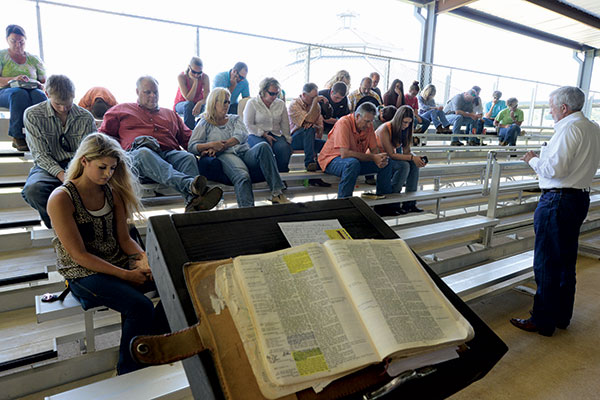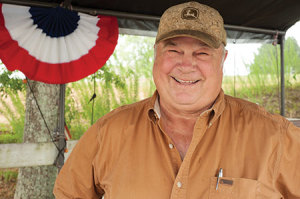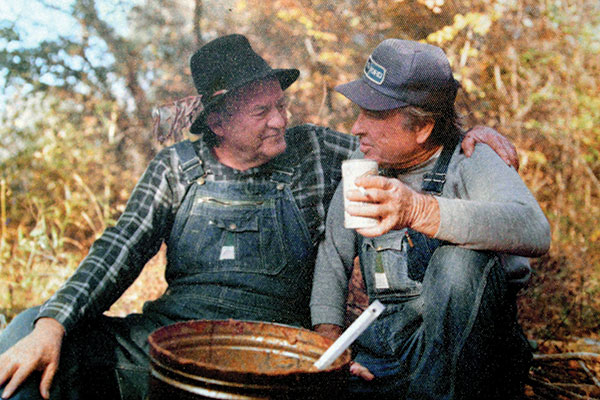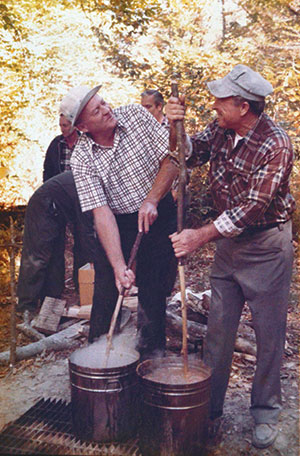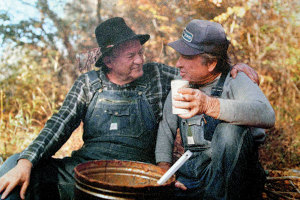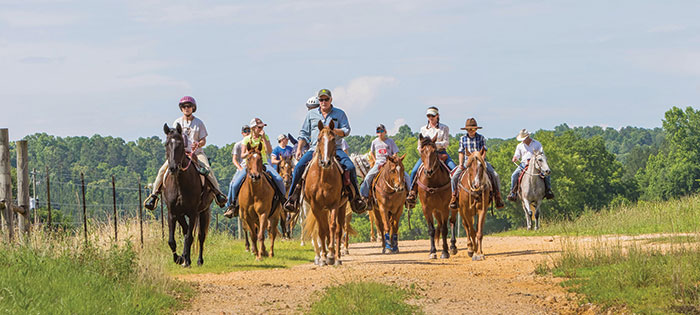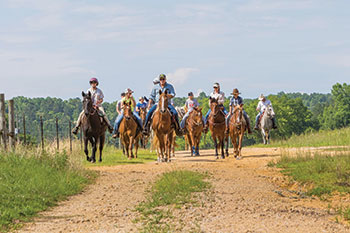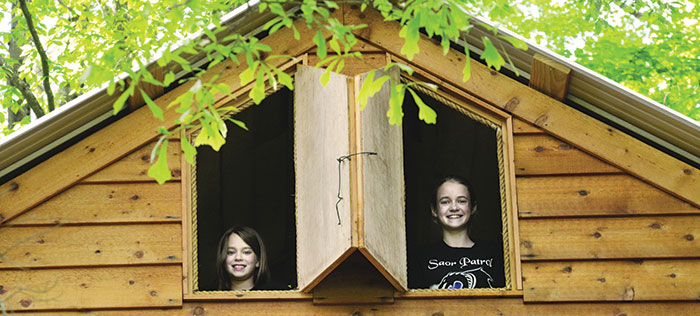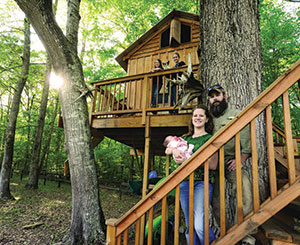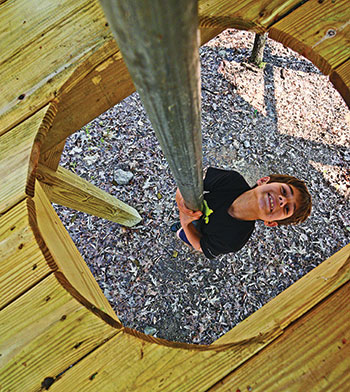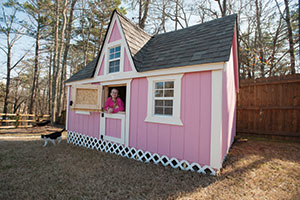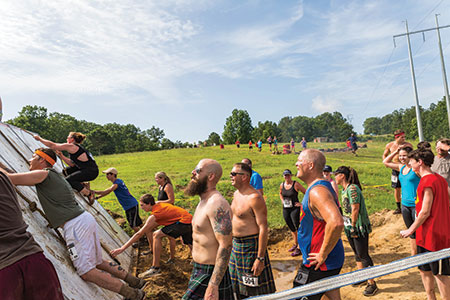A new Sunday tradition
Story by Leigh Pritchett
Photos by Jim Smothers
As people gathered for worship time, the words of an old, familiar hymn floated through the church.
“I surrender all; I surrender all. All to Jesus, I surrender; I surrender all.”
The music and the male voice from the soundtrack had a decidedly western flair.
Of course, that was quite fitting because this church is a cowboy church.
Called St. Clair County Cowboy Church, it meets at St. Clair County Arena in Odenville each Sunday at 10:30 a.m. – rain or shine.
The first worship service was in December 2014 and, during the winter months, congregants met in a building on the arena grounds.
Rob Richey of Chelsea, who has preached frequently at the worship services, said a cowboy church is a “congregation of God’s people” where the “gospel of the Lord and Savior” is presented in a western atmosphere.
“It is a gospel church,” James Dailey, Jr., of Springville said in explaining why he goes there. “It preaches the gospel of Jesus Christ, and it just feels like home.”
Gina Rich of Odenville has found it to be different from any other church she has attended.
“These people are just like us,” she said. “They’re just normal, everyday people. We have the same interest with horses and farming and things like that.”
Richey said a cowboy church does tend to appeal to people who have horses. But “we have people who come to the worship time who really don’t ride (and) don’t have horses.”
It does not matter what a person wears or where he is financially or spiritually, added Angie Cleckler of Springville. “It’s a church where you can come as you are … in everything.”
That casual atmosphere is one aspect that appeals to Clark Thompson of Moody and his wife, Missy. “We feel real comfortable coming,” Thompson said.
Jamie Kuhn even drives from Childersburg to go to the church.
Although it currently is not a member of the American Fellowship of Cowboy Churches (AFCC), St. Clair’s cowboy church operates on the same model, said Johnny Caradine of Springville.
Caradine was instrumental in establishing the St. Clair church. “Actually, God started it. He just used me to do it,” he said.
He explained that his family went to a cowboy church in Cleveland, Ala., four or five years. Then, Caradine began to feel God prompting him to establish a cowboy church in St. Clair County, he said.
This church that began with 10 to 15 people eight months ago has now grown to 45 or 50. Plus, visitors come to the worship time almost every week, said Caradine.
At many churches, a gymnasium is one means for reaching out to people in the community. For a cowboy church, the arena is a ministry tool.
That is why congregants of the St. Clair cowboy church will readily change their worship time in order to minister to groups using the arena for events, said Dale Stubbs of Odenville.
He gave as an example a Sunday that the arena was rented for a rodeo. Members of the cowboy church met that day at a time that would allow the rodeo participants to attend as well.
“That was neat,” said Stubbs, who has been part of the church since its first service. “We just changed our time on the church service to include them.”
Another feature of a cowboy church is that the arena does not have to be the only location for worship time. Caradine said members might decide to go on a trail ride and have their worship service at some place along the way.
“We’re flexible,” Caradine said. “We’re cowboys.”
On any given Sunday
On a Sunday morning in June, Don King of Cullman – an evangelist with a 40-year radio ministry in Arab – sat with his Bible open, going over his sermon notes once more. He was dressed in jeans, western boots and a white shirt.
Attendees took their places on the bleachers, and Caradine opened worship time with prayer requests. Before prayer, the males removed their hats in reverence.
No offering plate was passed. Instead, a saddlebag that was hanging on railing was where offerings could be placed.
Caradine’s daughter, Lily, sang a cappella: “My chains are gone; I’ve been set free. My God, My Savior has ransomed me. And like a flood, His mercy reigns. Unending love; amazing grace.”
King’s sermon was about that amazing grace, which comes upon a person’s life when he asks Jesus Christ into his heart to be Savior and Lord.
Man, on his own, is unable to keep God’s commands, King said. Each and every person does wrong, and punishment is due for those wrongdoings.
Jesus Christ – God’s Only Son — was beaten, had a crown of thorns pressed down upon His head and was nailed to a cross to take the punishment for all the wrong that each person has done, King said. Jesus endured all that, shedding His blood and giving His life, to save people from their sin.
“It’s amazing what the Lord can do in a person’s life,” King said, explaining that God had pulled him from a “pit” of sin. God can straighten out any life, he said. “Without the Spirit of God (in you), you can’t go to heaven.”
As he shared his Bible message in the open arena, the sights and sounds of creation were all around. Trees swayed in the breeze and birds chirped their summer songs. Horses waiting patiently inside the arena occasionally gave a snort or stamped the dirt.
 This particular Sunday just happened to be the day for the church’s monthly fellowship. So, after the worship service came a time to enjoy barbecue, potato salad and conversation.
This particular Sunday just happened to be the day for the church’s monthly fellowship. So, after the worship service came a time to enjoy barbecue, potato salad and conversation.
Yet, that did not end the church gathering.
After dinner on the grounds, more horses were led into the arena, where some adults, teens and children rode them. Other young people honed their skills for different competitive events.
Many of the youths who attend the church participate in rodeos, team roping, obstacle challenges and other types of events.
Cason Davis of Odenville, one of those teens, said the youths generally practice after the worship service each week. “Everybody helps each other” and encourages one another, he said.
That is one of the great aspects of the cowboy church, said Colby Dodson of Remlap, another teen competitor. “People understand what we like.”
The fact that the church appeals to youths is a definite advantage, said Caradine. “If you can get the youth involved, the parents will come,” he said. “Our youths love to come to church.”
In June, the church added a Wednesday-evening Bible study to its ministry. The Bible study starts at 6:30 p.m. and is followed by an open-arena time for riding, roping, running barrels and the like.
Caradine said there is a special time for young people. “We have a youth message, then play in the dirt.”
Richey, who leads the Wednesday ministry, said everyone is welcome to attend the Bible study or come simply to ride.
Follow St. Clair County Cowboy Church on Facebook














